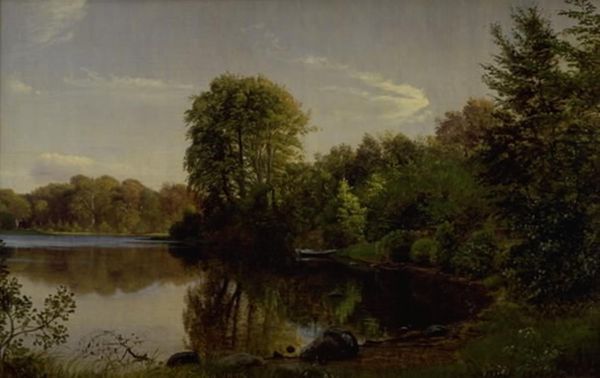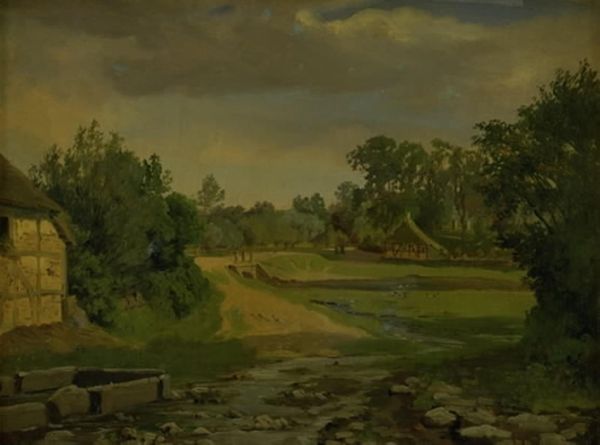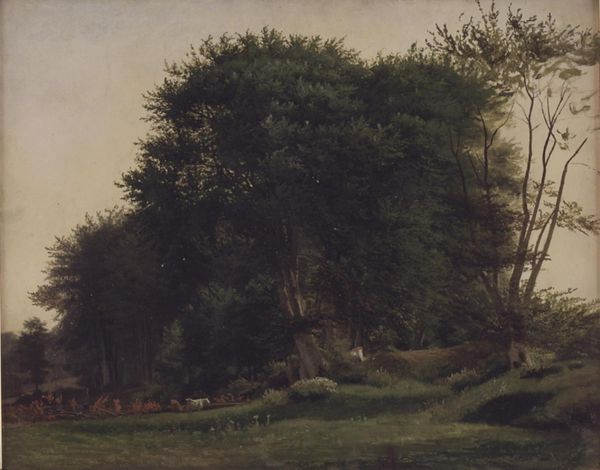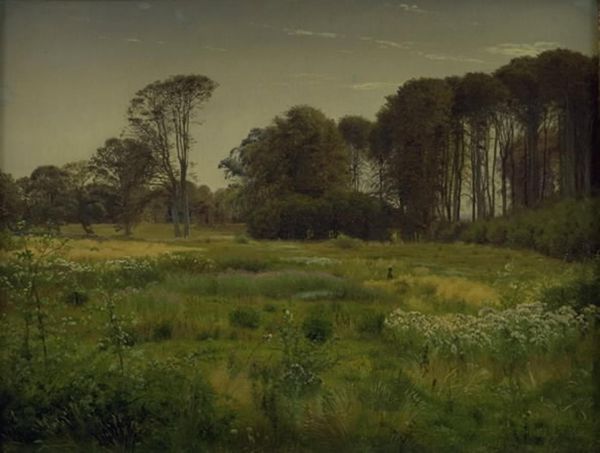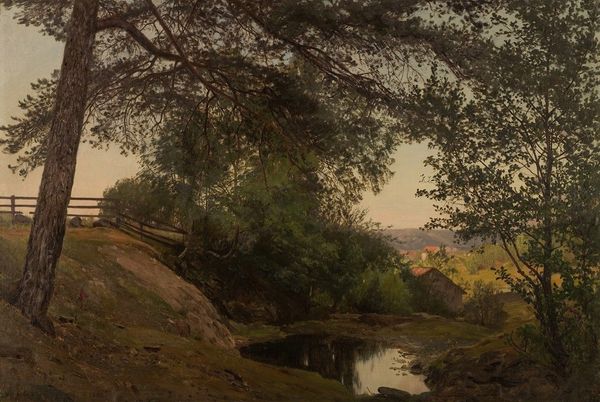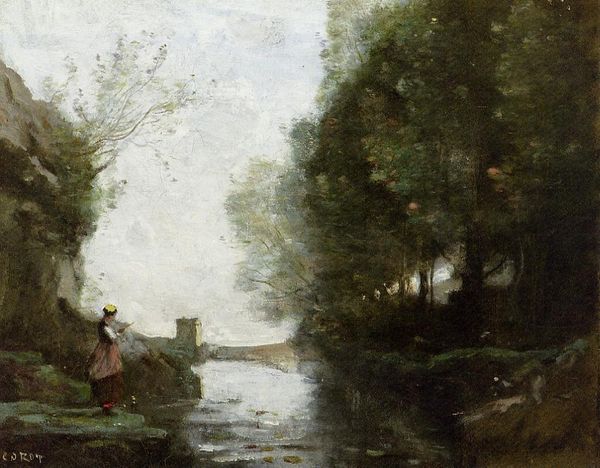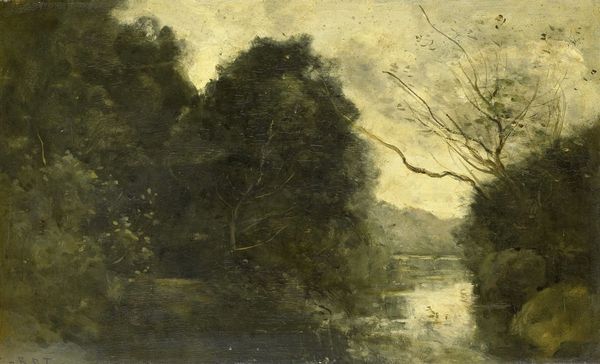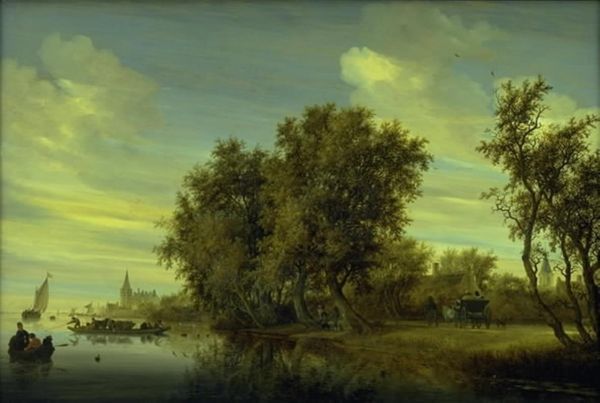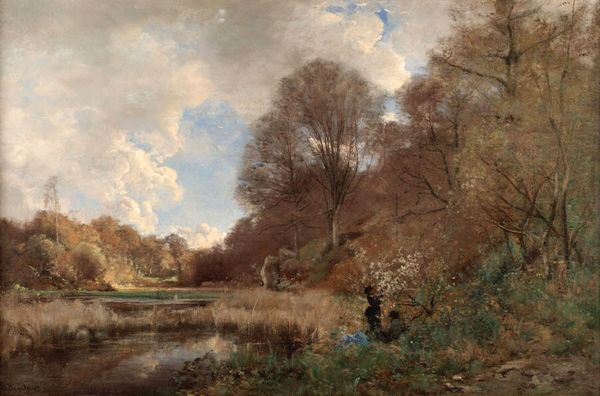
Dimensions: 27.5 cm (height) x 41 cm (width) (Netto)
Curator: I find this scene immediately enveloping—almost oppressively green, like a stage set about to swallow its actors. Art Historian: Quite right. What we're looking at is "A Canal, Frederiksværk, Zealand" by Thorald Brendstrup, completed in 1853. It is an oil on wood, exhibiting that delicate balance between romantic idealism and realist observation that characterized the Danish Golden Age painting. Curator: Idealism perhaps, but tempered, wouldn’t you say, by a sense of encroaching industrial reality? Frederiksværk itself was an industrial town, and a canal suggests movement of goods, of people displaced by those goods. The figures on the path feel small, insignificant even, next to that imposing wall of trees. Art Historian: Indeed, the landscape serves almost as a silent witness to societal change. The canal, essential for transport and trade, marks Frederiksværk as an important, developing hub of industry, linked to larger economic systems. This location provided key infrastructure. Curator: I see the tension you mention—that classic Romantic juxtaposition of the sublime natural world alongside the symbols of human development, except here, nature seems almost wary. Consider the palette, muted and heavy, it adds a layer of, what, apprehension? Are the people walking into the future—or losing something to its progress? Art Historian: Precisely. Think too, about how Denmark was positioned at that time – a smaller nation, navigating shifts in European power. Artists like Brendstrup often depicted landscapes that subtly alluded to national identity and its relationship with modernization. Curator: So it's not just about aesthetics—it's about placing ourselves in the social currents of that era, seeing this canal as more than just water, more as a kind of symbolic artery, connecting not just places but the pulse of Danish society. Art Historian: Absolutely. By studying works like these, we engage not only with art history but also with the vibrant political and economic debates of the time. The image is far from apolitical in its gentle aestheticization of waterways that were so important for commerce and resource movement. Curator: It's fascinating to peel back those layers of context, isn’t it? I walked in ready to be swallowed by the foliage but will walk away looking much more attentively, more consciously at how such landscapes speak to labor and displacement in very elegant brushstrokes. Art Historian: As will I—mindful to see those brushstrokes within their historical, and of course political, framework.
Comments
No comments
Be the first to comment and join the conversation on the ultimate creative platform.
